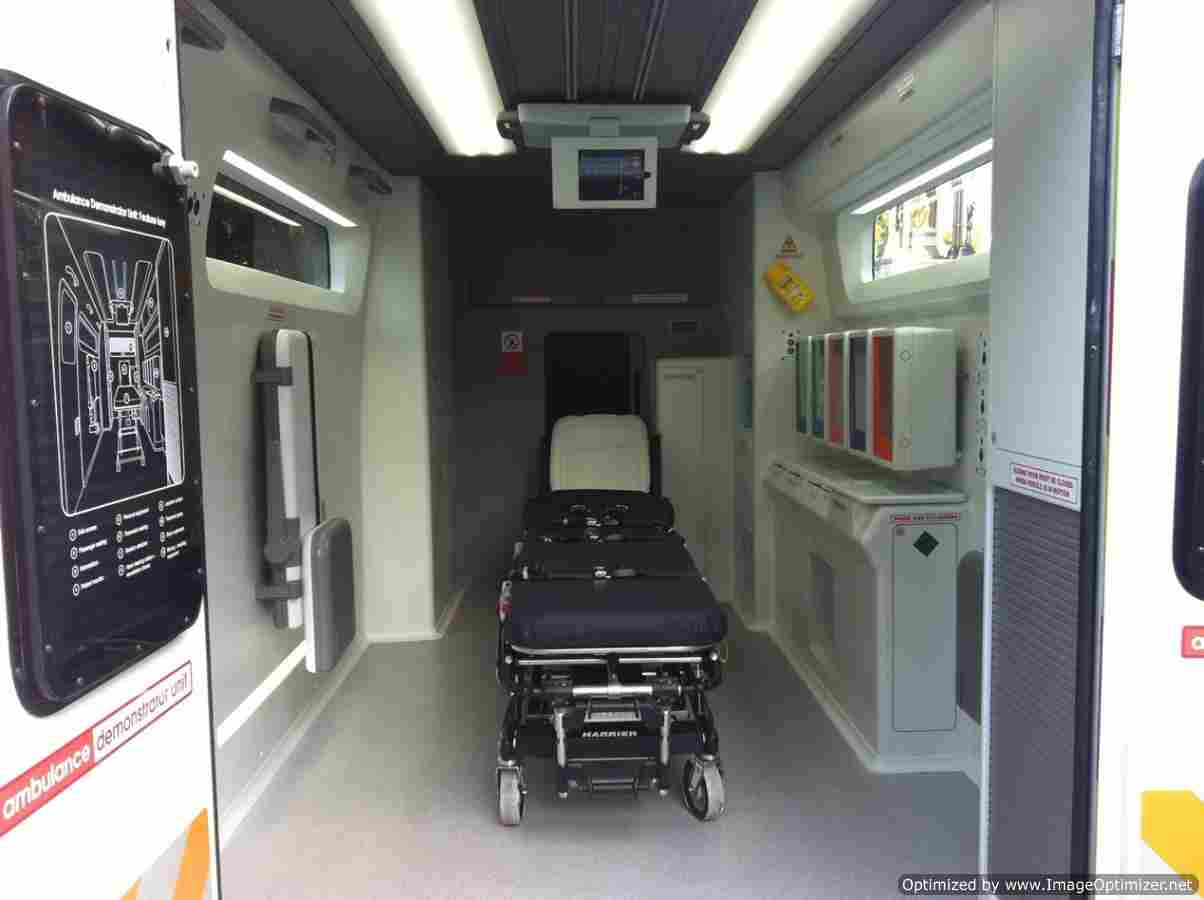A Stylish new wheelchair, a cancer centre that is helping to change the face of palliative care environments, and a futuristic emergency ambulance are among a number of UK projects in the running for top design awards.
Showing the huge impact good design has on the healthcare market, the ground-breaking trio are among those nominated for the Design Museum’s Design Awards 2012 , the winners of which will be announced in April.
Being judged across seven categories - transport, fashion, product, graphics, furniture, digital and architecture – the entries sit alongside other innovative designs from the UK and further afield. These include, from the UK, Kate Middleton’s royal wedding dress, the revamped BBC website home page, and the High Arctic presentation at the National Maritime Museum in London. From overseas, nominations include Guangzhou Opera House in China, Spaceport America in New Mexico, and the Homeplus Tesco virtual store in South Korea.
The healthcare sector is particularly well represented among the nominations. Other hopefuls include, in the architecture category, Butaro Hospital in Rwanda, which was designed by Mass Design Group; and an elderly care home in Belgium, which was the work of Sergison Bates Architects of London. In the product category, there is also an automated external defibrillator (AED) by Defibtech, which boasts an inbuilt colour video taking users through the life-saving procedure step by step.
The new wheelchair design is the work of Scottish husband and wife team, Andy and Mary Slorance of I-Imagine Design. Andy has been a wheelchair user for 28 years after suffering a spinal injury at the age of 14. He has designed the Carbon Black chair to help improve the lives of thousands of people, including injured servicemen and women.
The product features LED lights for easier navigation at night, is made to measure for each person, and is lightweight and modern-looking.
Andrew said of the design: “I wanted Carbon Black to solve many of the problems I have faced with my conventional chairs over the years. I want to empower its user with increased confidence from a chair that is cutting edge, yet minimal in its appearance – more person, less chair.”
Nominated in the architecture category is the Maggie’s Centre on the site of Gartnavel Hospital in Glasgow. One of the latest in a series of landmark palliative care buildings the Maggie’s Centre charity has built across the UK, it opened in October and was designed by Pritzker Prize-winning architect, Rem Koolhaas of The Office for Metropolitan Architectre (OMA) based in Rotterdam. He said: “I didn’t think it should be a building that challenges people to live better; rather it should have a direct effect on the people who use it. The space we have is great because it is linked to the existing hospital, but far enough away from it for us to create another world. It has both privacy and a central position; both sheltered and slightly exposed. The centre has a holistic feel and hopefully will provide respite and comfort for people.”
And, in the running to take the prize in the transport category is the redesign of the emergency ambulance, as covered by Building Better Healthcare last autumn.
Created by the Helen Hamlyn Centre for Design (HHCD) based at the Royal College of Art, the new-look transport marks the first major revamp of emergency vehicles for decades. It will also go some way towards standardising the design, which currently differs across the country.
The latest version was put together using feedback from emergency services staff and patients and the changes include rationalised equipment storage spaces and an easy-clean interior, making cleaning and infection control much simpler and more effective. The vehicles are also equipped with some of the advanced technologies that everybody takes for granted in mobile phones, computers and passenger cars. Properly linked together in an ambulance, these revolutionise patient vital signs monitoring and data transfer to the receiving hospital, provide video links to specialist clinicians and facilitate navigation to specialist stroke, cardiac or trauma units.
However, possibly the design change with the biggest impact was the decision to move the stretcher from its traditional position against the side of the ambulance and place it in the centre, so staff have 360° access to the patient. All equipment and consumables, waste disposal, hand cleaning and seating are carefully placed to provide a logical, ergonomic layout. The updated design also includes bigger windows to allow more natural light into the interior, and sophisticated lighting controls.
Gianpaolo Fusari, a research associate at the HHCD, told BBH: “There are many problems with the design of existing ambulances, impacting negatively on patients and paramedics alike. They’ve evolved from horse-drawn carts used in the Crimean War and nobody seems to have stood back and designed the treatment space in the back of the vehicle from first principles.
“This environment is difficult to keep clean, given the frequency of use and infrequent opportunities to scrub the vehicle down. This frequently leads to hygiene and infection control problems. Ambulance crews also suffer from poorly thought-out ergonomics, badly laid-out equipment and difficult-to-access storage spaces, all of which can affect performance in critical, life-threatening situations.”
Click here to see the full list of entries

The interior of the traditional ambulance has been changed to provide easier access to the patient and to boost infection control




